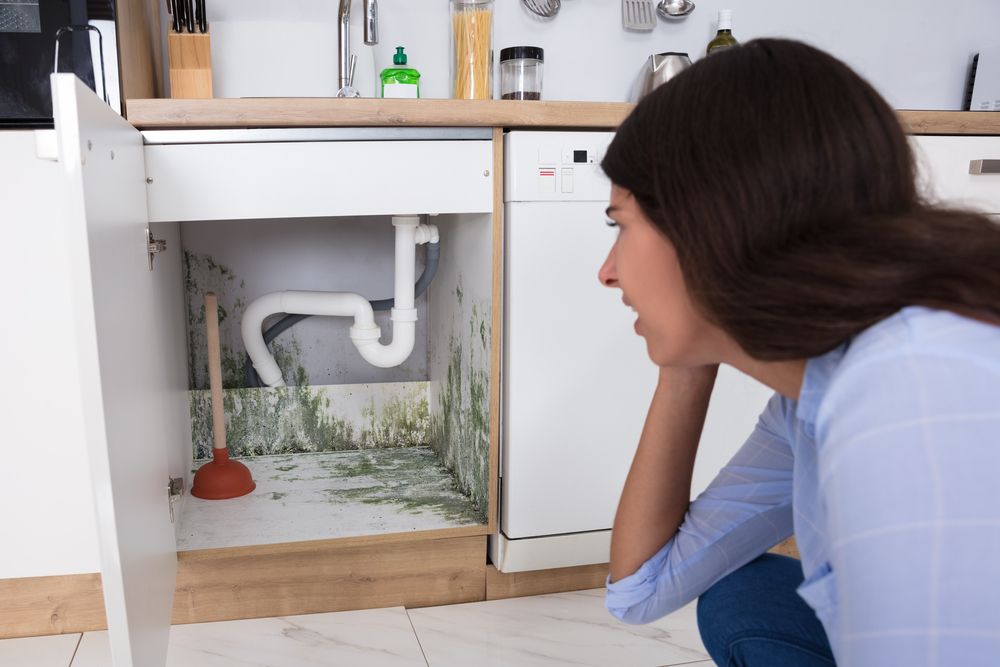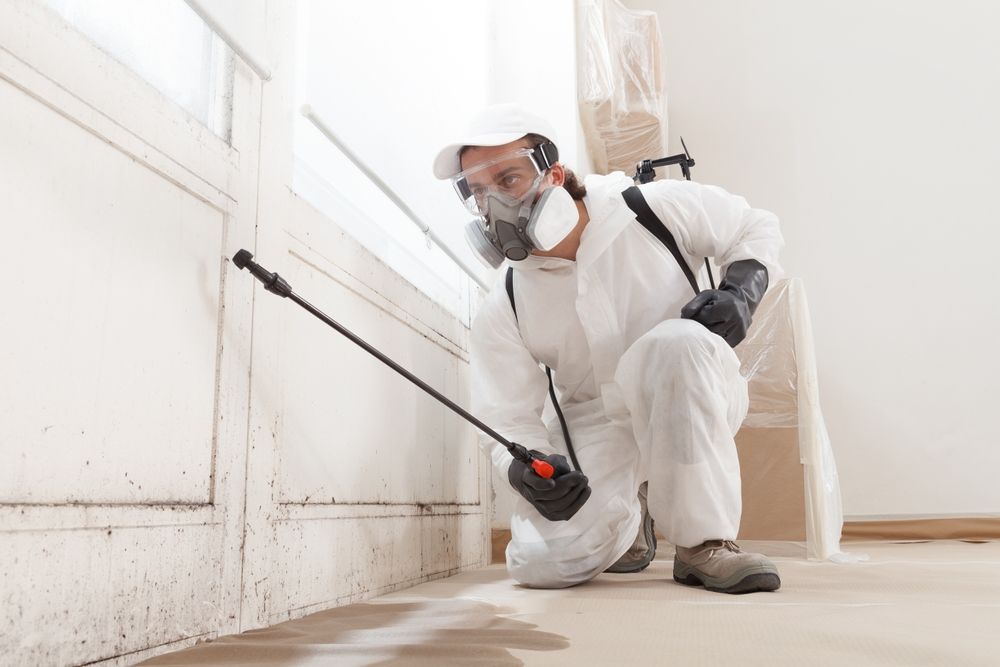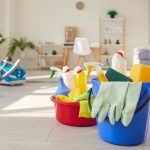Mold is a common problem in homes and buildings, but it can be more than just an eyesore. Left unchecked, mold growth can cause significant damage to your property, impact indoor air quality, and even lead to health issues. While mold thrives in damp and humid environments, it’s not always easy to spot in its early stages. However, with some basic knowledge and preventive measures, you can detect mold early, take steps to address it, and prevent it from spreading further.
In this article, we’ll walk you through the signs of mold, how to detect it in your home, and strategies for preventing mold growth in the first place.
Understanding Mold and Its Effects
Mold is a type of fungus that thrives in warm, damp environments. It grows in the form of tiny spores, which can travel through the air. When these spores land on a surface that is moist, they begin to grow and reproduce, often appearing as discolored patches on walls, ceilings, floors, or hidden areas like behind wallpaper and underneath carpets.
There are thousands of types of mold, but common household molds include:
- Aspergillus
- Cladosporium
- Stachybotrys (black mold)
- Penicillium
While mold is a natural part of the environment, it can become a problem in indoor spaces. Exposure to mold can cause allergic reactions, asthma, sinus congestion, headaches, skin irritation, and other respiratory issues, especially in people with preexisting conditions. Mold also produces mycotoxins, which can be harmful when inhaled or ingested over time.
How to Detect Mold in Your Home
Mold can grow in many places, from the bathroom and kitchen to the basement or attic. But, before you can prevent or treat mold, you need to detect it. Here are some common signs that mold may be present:
1. Visible Signs of Mold
Mold is often visible to the naked eye. It typically appears as dark spots or patches, but can also be white, yellow, or even green in color. You may notice mold growing in:
- Bathrooms: Around showers, tubs, sinks, and toilets, where moisture accumulates.
- Kitchens: Near dishwashers, refrigerators, or under sinks.
- Basements: In damp, low-ventilation areas.
- Attics: Around areas with poor insulation or ventilation.
- Behind Walls or Ceilings: Mold may be hidden behind wallpaper, drywall, or ceilings where moisture has been trapped.
2. Musty Odor
One of the first signs of mold, especially if it’s hidden in places like behind furniture or within the walls, is a musty smell. If you notice a damp, earthy odor that doesn’t go away, it may be an indication of mold growth. If the smell is particularly strong in one area of the house, investigate that area more closely.
3. Dampness or Water Damage
Mold requires moisture to grow, so signs of water damage are a red flag. Look for areas where water leaks may have occurred, such as:
- Leaky pipes under sinks or in walls.
- Condensation on windows, walls, or ceilings.
- Flooding or water seepage in basements.
- Stains or discoloration on walls or ceilings.
If you notice any of these issues, there’s a chance that mold may be present or could develop in the future.
4. Respiratory Problems or Allergy Symptoms
If you or anyone in your household experiences frequent coughing, sneezing, itchy eyes, or sinus congestion, this could be a sign of mold exposure. Mold spores can cause allergic reactions, and individuals with asthma or compromised immune systems are particularly vulnerable.
5. Increased Humidity
High humidity levels provide the perfect breeding ground for mold. If you live in a naturally humid climate or have indoor humidity levels that exceed 60%, mold is more likely to develop. Keep an eye on areas with high humidity, such as bathrooms and kitchens.

Steps to Prevent Mold Growth
Preventing mold is all about controlling moisture. Mold can only grow when there’s enough water or humidity to support its growth. Here are some key ways to prevent mold before it has a chance to take hold:
1. Keep Your Home Dry
The most effective way to prevent mold is to eliminate excess moisture. To do so:
- Fix Leaks: Repair any leaking pipes, roofs, or windows promptly to prevent water from accumulating.
- Use a Dehumidifier: Use dehumidifiers in areas with high humidity, such as basements or bathrooms. Set the humidity level to around 50% to keep mold at bay.
- Ventilate Your Home: Ensure your home is well-ventilated by opening windows, using exhaust fans in the kitchen and bathroom, and installing vents in high-humidity areas like attics and basements.
2. Use Mold-Resistant Materials
When building or renovating your home, consider using mold-resistant materials. These materials are designed to inhibit mold growth and can be particularly useful in areas like bathrooms and basements. Some options include:
- Mold-resistant drywall: Specially treated drywall to resist moisture.
- Mold-resistant paint: Paint that contains antimicrobial properties to reduce mold growth.
- Water-resistant flooring: Materials like vinyl or tile that don’t retain moisture.
3. Regularly Clean and Inspect Damp Areas
Pay close attention to areas that are prone to moisture and mold growth, such as bathrooms, kitchens, and basements. Regularly clean these spaces to prevent mold spores from settling and growing. For example:
- Clean bathrooms: Wipe down bathroom walls, ceilings, and tiles regularly with mold-fighting cleaners.
- Dry wet surfaces: After taking a shower or cooking, use a squeegee or towel to wipe down surfaces and prevent moisture buildup.
- Clean and inspect your attic: Check for leaks or standing water and ensure proper ventilation to prevent mold growth.
4. Control Indoor Humidity
As mentioned earlier, controlling the humidity in your home is crucial for preventing mold. In addition to using a dehumidifier, you can:
- Run air conditioners during hot, humid months to remove moisture from the air.
- Keep windows open during dry days to allow fresh air to circulate.
- Seal windows and doors to prevent drafts and water from entering during storms.
5. Insulate Pipes
In colder months, pipes are more prone to freezing, which can lead to cracks and leaks, creating an environment for mold. Insulate pipes in unheated areas, such as attics, crawl spaces, and basements, to prevent them from freezing and potentially leaking.
6. Use Silica Gel or Moisture Absorbers
In areas prone to excess moisture, like closets or basements, use silica gel packs or moisture-absorbing products to prevent mold growth. These can help absorb excess moisture from the air, keeping your spaces dry.
What to Do if You Find Mold
If you detect mold in your home, don’t panic. Early detection is key to stopping mold before it spreads. For small areas of mold (less than 10 square feet), you may be able to clean it yourself. Here’s how:
- Wear protective gear: Wear gloves, a mask, and goggles to protect yourself from mold spores.
- Use mold-cleaning solutions: Use store-bought or homemade mold cleaners, such as a mixture of water and bleach or vinegar, to scrub the mold off affected surfaces.
- Dry the area: After cleaning, thoroughly dry the area to prevent the mold from returning.
For larger infestations or if mold has spread to hidden areas, it may be necessary to hire a professional mold remediation specialist who can safely and effectively remove the mold.
Mold is a common household problem, but it doesn’t have to become a serious issue. By understanding how mold grows and taking steps to detect and prevent it early, you can keep your home safe, dry, and healthy. Be proactive about moisture control, regularly inspect damp areas, and take action as soon as you spot any signs of mold. By staying vigilant and making mold prevention part of your regular home maintenance routine, you can prevent costly damage and protect the health of everyone in your household.



